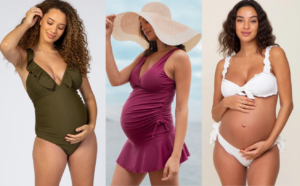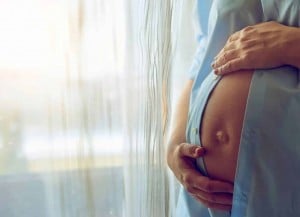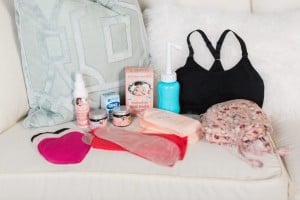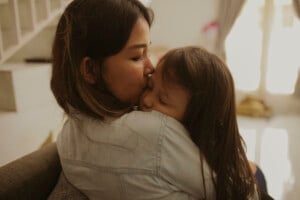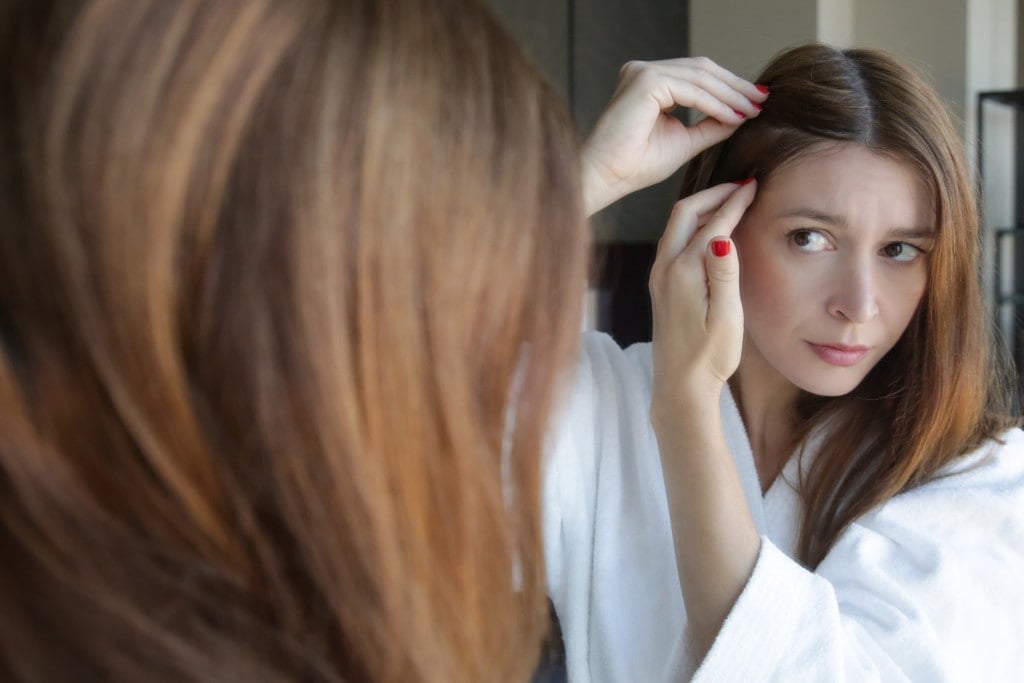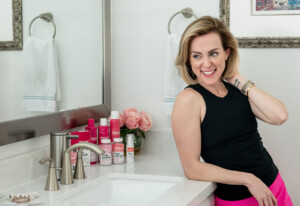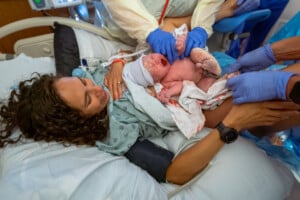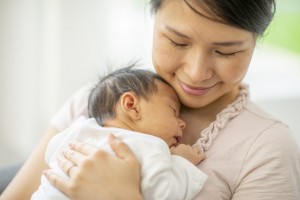There are certain things that most women know to prepare for when having a baby. There are things you expect and even assume you might “lose” when you become a mother. Perhaps it’s your independence, pre-baby body, or weekly date night. But, I’d like to shed some light on what is often not discussed openly and something many women are unaware that they will lose. When you have a baby, you will likely go through a period of hair loss. I know this to be true because, like many other moms who have had a baby this past year, I am currently in the thick of it (see what I did there?).
What is Postpartum Hair Loss?
Postpartum excessive hair shedding, also known as telogen effluvium, is not true hair loss.1 Yes, there is a difference between hair loss and hair shedding! Hair loss occurs when something stops hair from growing. According to the American Academy of Dermatology Association, it is normal to shed 50-100 hairs daily.2 Excessive shedding is common in people who have experienced a significant stressor, including considerable weight loss, undergoing an operation, following an acute febrile illness, experiencing a stressful event such as losing a loved one or job, and falling estrogen levels after giving birth. Your hair actually stops shedding during pregnancy. Perhaps you have noticed full, voluminous hair while expecting. But the shedding resumes all at once after birth.
Postpartum Hair Loss is Normal
I know this sounds like it could be cause for concern but read this carefully — this is normal, common, expected, and temporary. Hair shedding typically begins 2-3 months after delivery, and the peak of hair loss is at 4-6 months, followed slowly by regrowth. There will probably appear to be short fuzzy hair everywhere as it grows back in. Women should see their hair return to its normal fullness by their child’s first birthday, but it likely will occur sooner, around 6-9 months postpartum.
When to Seek Professional Help
Board-certified dermatologist Katherine Nolan, MD, FAAD, does note that while shedding is very common after having a baby, if it is not improving after several months, it is important to see a dermatologist for an evaluation. “I like to check thyroid, iron levels, and several other labs to ensure we’re not missing anything else going on,” she says.
Can You Stop Postpartum Hair Loss?
You do not have to do anything to remedy it. There is nothing you can do to fully prevent it or completely stop it. There are a few suggestions, however, that Shilpi Khetarpal MD, FAAD, a board-certified dermatologist & associate professor of Dermatology at the Cleveland Clinic, offers: “Moms should continue their prenatal vitamins after delivery to make sure they’re getting enough nutrients (iron, vitamin D, zinc, B vitamins) to support their hair health. For moms who aren’t breastfeeding, topical minoxidil can slow down shedding.”
Dr. Nolan explains that other treatments, including PRP (platelet-rich plasma) injections, may be used in certain situations. There are additional medications she prescribes that can be used to help speed up regrowth.
A natural supplement called Nutrafol Women targets key factors that shorten the growth phase, delays new growth, and cause new hair to grow thinner. Nutrafol is 100% drug-free, physician-formulated, and made with natural ingredients and no artificial additives. A 6-month randomized, double-blind, placebo-controlled study revealed that 80% of women reported improved hair growth, 80% reported improved hair thickness, and 73% reported improved hair growth rate.3
How Can You Cope with Postpartum Hair Loss?
For most women with mild to moderate hair thinning, you might consider a simpler approach. I would suggest using a volumizing shampoo that contains proteins that coat the hair, making the hair appear fuller. Also, use a conditioner formulated for fine hair, which contains lighter formulas that will not weigh down your hair. Apply conditioner primarily on the ends of your hair. Applying it to your scalp and the full length of your hair tends to weigh hair down. Avoid conditioners labeled “intensive conditioners,” as they are too heavy. Also, avoid any shampoo labeled “conditioning shampoo,” as these can also weigh your hair down and make it look limp.
Many women take this as an opportunity to change up their hairstyle or decide to wear stylish headbands as an easy solution. New mothers often prefer shorter hair, which can be easier to manage and saves time. Anything that saves time with a baby at home to care for can be a real gift! Better yet, a short hairstyle can even make hair appear fuller.
Keep These Important Things in Mind
As you clean out your hairbrush again, remove hair from the shower drain, or find yourself frustrated trying to reach that one loose hair on the back of your shirt, just remember:
You will not go bald. You will feel like you will go bald. But you will not go bald.
And, yes, as always, you are still beautiful.
Disclaimer: While I am a doctor, I am not your or your child’s doctor. All content presented in this article is for educational purposes only. It does not constitute medical advice and does not establish any kind of doctor/patient relationship. Speak to your child’s healthcare provider about any questions or concerns you may have.

